
Tooth numbering in the primary dentition (LHS) and permanent dentition... Download Scientific
The tooth numbering system used in Australia uses two numbers to describe the location of the tooth. The first number designates the quadrant, which progress clockwise from 1 to 4 in adult teeth, starting with the upper right.
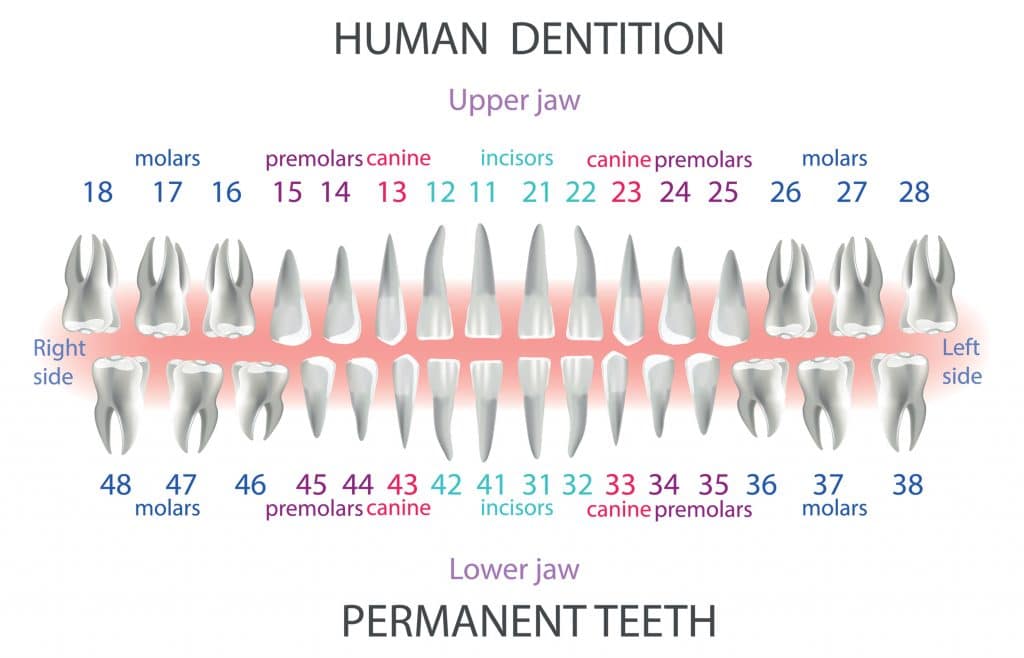
Dental Tooth Number Chart Dental Teeth Numbers And Names
There are a number of ways to find a dentist in Australia. You can use the ADA's Find a Dentist search tool,. Australia sets the bar high for quality and safety in dental care. Australia has some of the best infection control requirements and standards in the world. These standards are critical in dental clinics.

Tooth Number Chart to Identify Primary Teeth Eruption Charts
The teeth are usually numbered using the universal numbering system. The numbers 1-32 are used to designate the teeth in the permanent dentition. The number 1 designates the tooth located furthest to the right of the upper jaw, when looking at the mouth. Conversely, the number 32 designates the tooth located furthest to the left of the lower jaw.
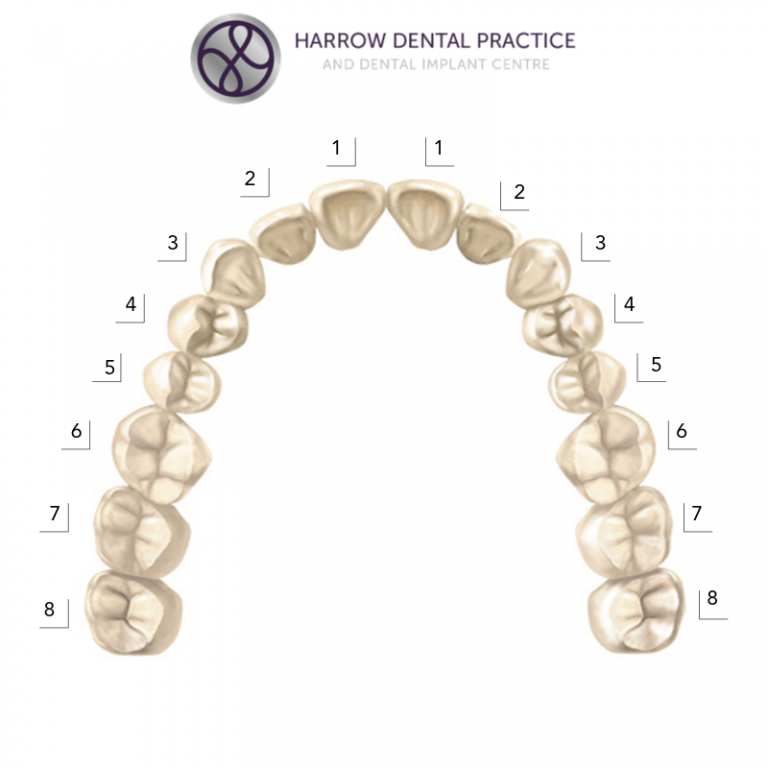
tooth number chart to identify primary teeth eruption charts tooth chart with names dental
The numbers are split into four quadrants: top right, top left, bottom left and bottom right. Did you also know sets of teeth have their definition? Each definition has a specific number assigned to it: Central Incisor - the upper and lower teeth at the front of the mouth

Printable Tooth Surface Chart Customize and Print
The Australian Schedule of Dental Services and Glossary is the definitive coding system of dental treatments and services in Australia and should reflect current dental practice.. ITEM NUMBERS are a three-digit coding system which describe dental services. 1.7. A DENTIST is an appropriately qualified dental practitioner, registered by the.
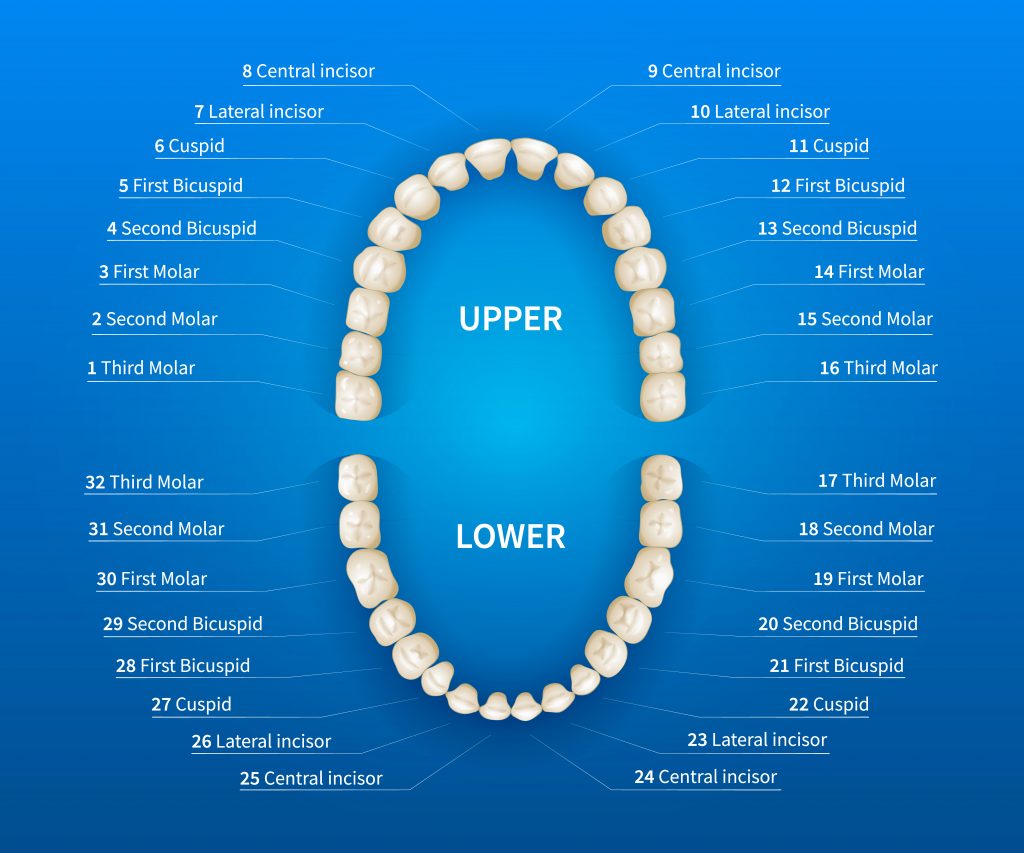
3 Best Teeth Numbering Systems and Our Handy Conversion Chart.
What is tooth numbering? Tooth numbering is used by dental practitioners to identify and provide specific information linked with a particular tooth. The chart below allows dentists to quickly and easily communicate with each other and to a patient about their teeth and what they can do to keep them healthy.

Tooth numbering systems
Figure 3 is an OPG showing the full complement of 32 adult teeth. Identification of the teeth is by quadrant and tooth number. Quadrant is stated first, and then tooth number, as shown in Figure 5. Note that in Figure 3, teeth 15 and 12 have undergone root canal treatment, as have teeth 26 and 36.
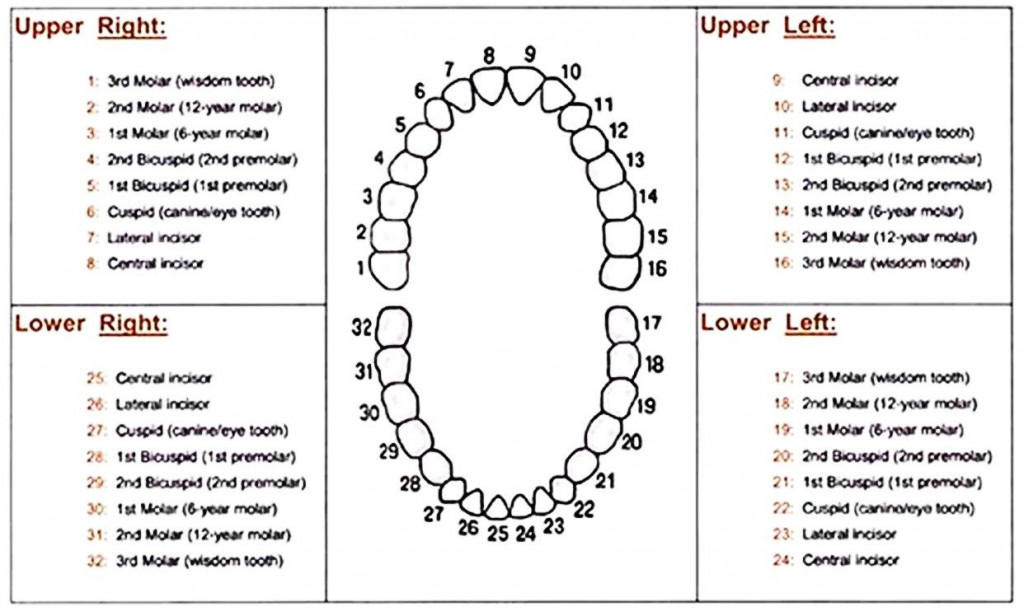
Why You Need To Know The Tooth Numbering Chart?
The system uses a bracket symbol to illustrate where the tooth belongs on the chart. It is a single-digit teeth numbering system and follows the same sequence as the adult teeth in FDI. However, it uses A-E, instead of 1-5 that is used in the FDI system. Teeth Numbering System Comparative Chart, Universal, FDI, and Palmer.
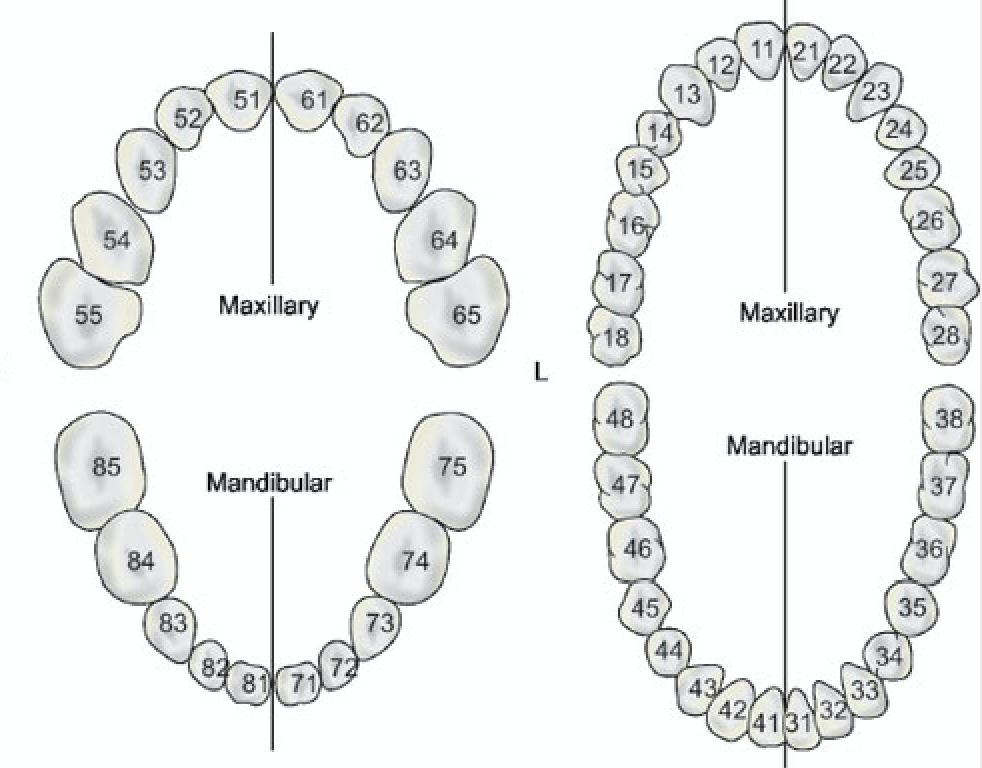
3 Best Teeth Numbering Systems and Our Handy Conversion Chart.
Teeth numbers 17-32 are in the mandibular arch or simply your lower jaw. Anterior and Posterior Teeth The front, anterior, or teeth are the following: Top: 6-11 Bottom: 22-27 The posterior or back teeth have four quadrants and contain the following teeth: Top: 1-5 and 12-16 Bottom: 17-21 and 28-32
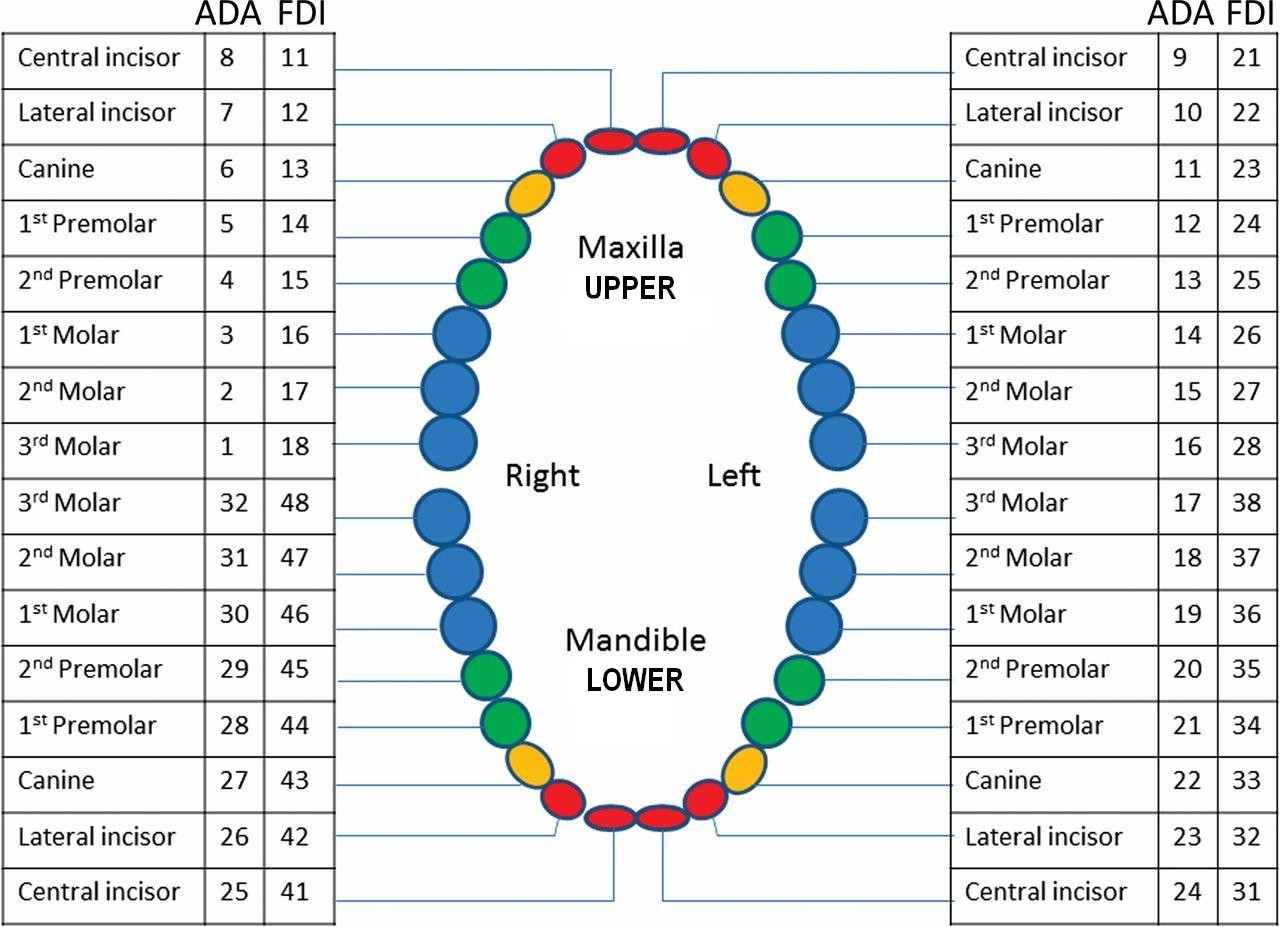
Navadha EnterprisesOSCE / ADC AustraliaColumbia Dentoform teeth PVR 860 USA
323 Surg r/o tooth/fragment with r/o bone 324 Surg r/o tooth/fragment r/o bone & divis 411 Direct Pulp Capping 412 Incomplete endodontic treatment 414 Pulpotomy 415 Complete prep for root canal - 1 canal 416 Complete prep for root canal-extra canal 417 Root Canal Obtuaration - 1 Canal 418 Root canal obturation, additional canals.

Why Do Dentists... Say Numbers?
All teeth in quadrant 1 start with a 1. All teeth in quadrant 3, start with a 3, and so on. The quadrant number is the first digit in the numbering system. Each tooth is given its own number For adults, there are eight teeth within each quadrant. Each is numbered from 1-8 and this number describes the type of tooth.

Here is a tooth chart (or a tooth map) that shows the lettering and numbering system that is
1st bicuspid (1st premolar) Cuspid (canine/eye tooth) Lateral incisor Central incisor Upper left Central incisor Lateral incisor Cuspid (canine/eye tooth) 1st bicuspid (1st premolar) 2nd bicuspid (2nd premolar) 1st molar (6-yr molar) 2nd molar (12-yr molar) 3rd molar (wisdom tooth) Lower left
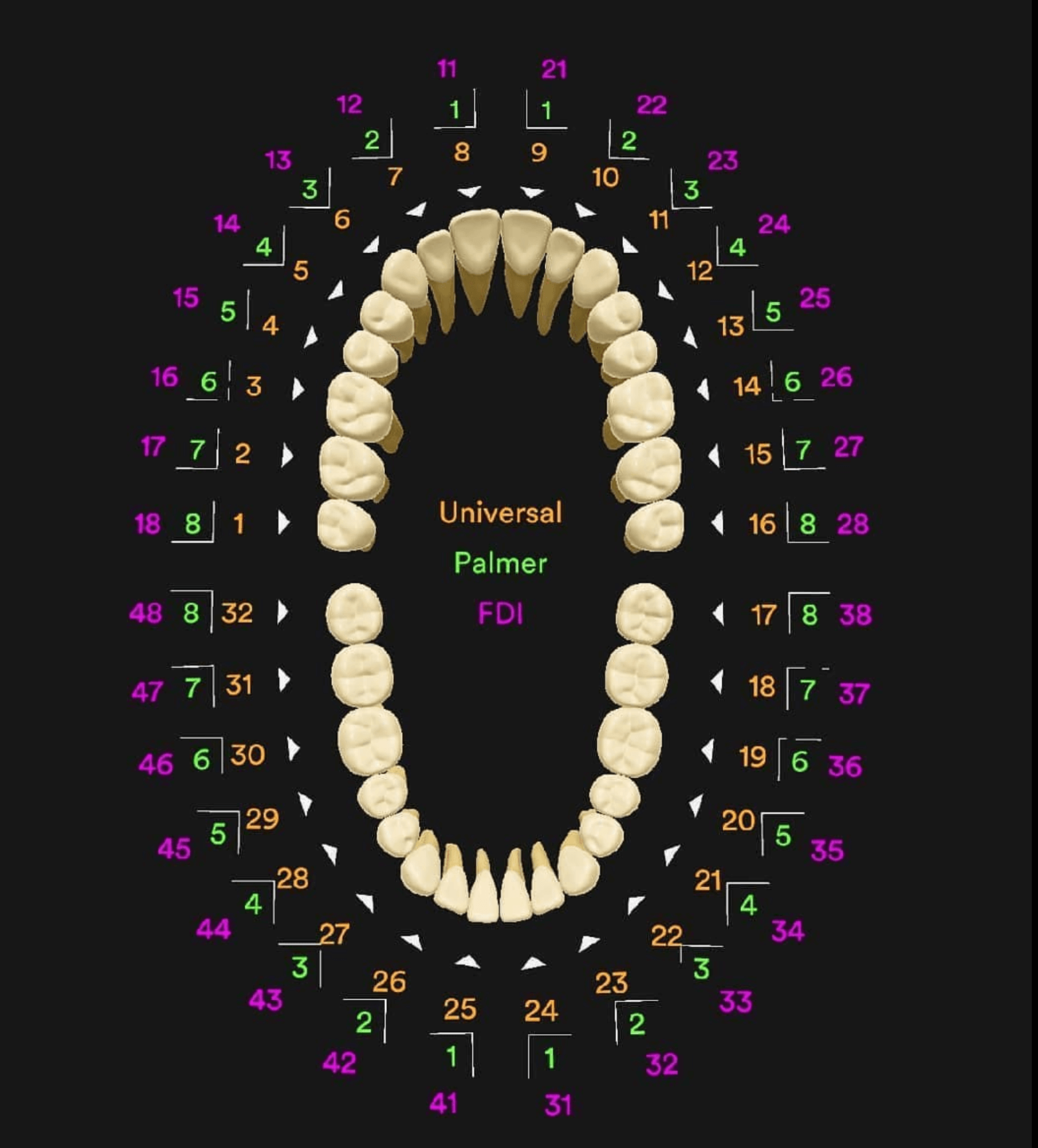
Tooth numbering systems in dentistry News Dentagama
Teeth numbers 1 - 16 are on the upper jaw, also known as the maxillary arch. Teeth number 17 up to teeth number 32 are in the lower jaw, also known as the mandibular arch. Check this printable teeth universal numbering system below. Figure 1. Teeth numbers and names diagram. The human teeth is composed of 16 upper teeth and 16 lower teeth.
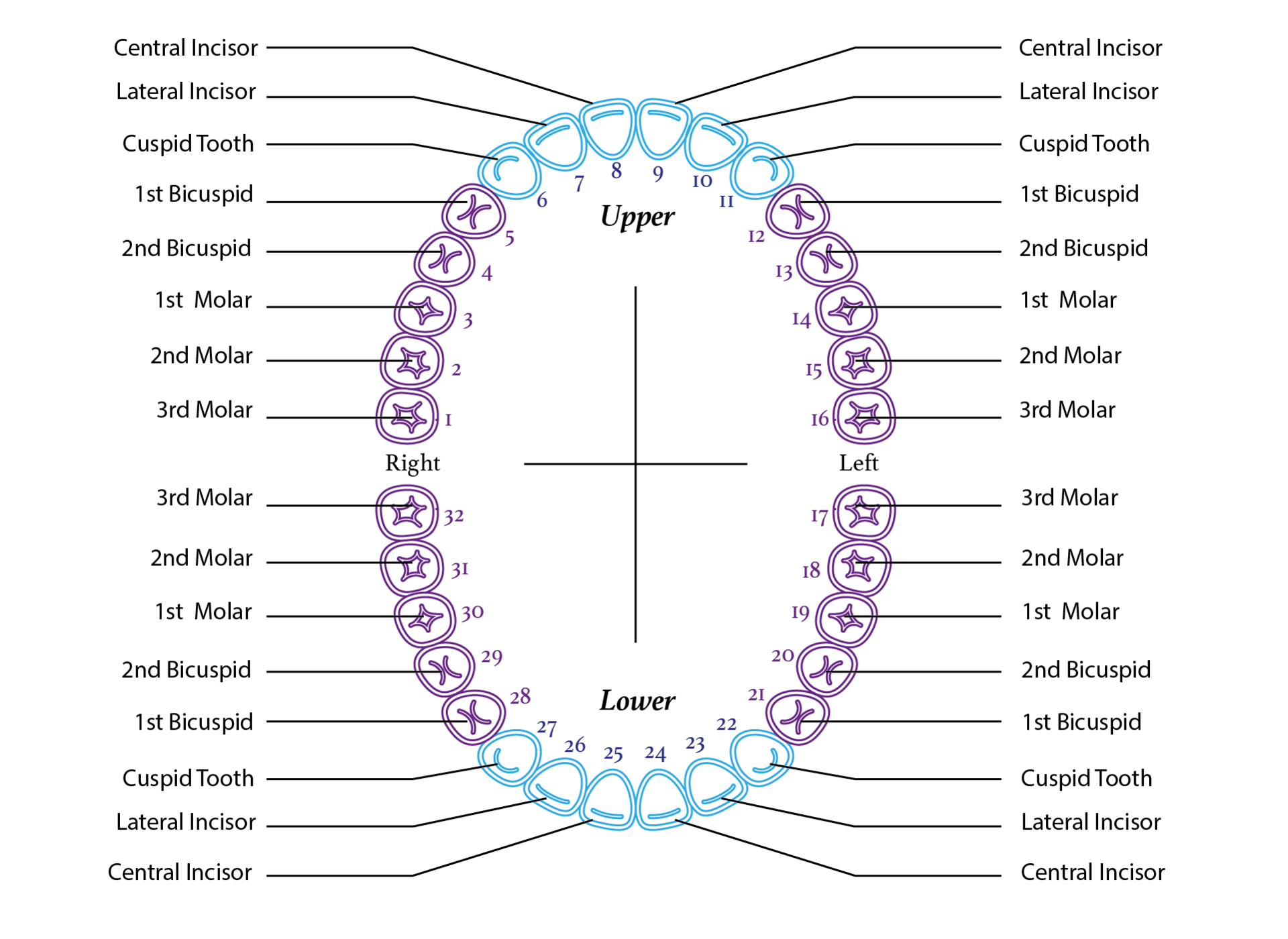
Free Printable Tooth Chart Printable Templates
All teeth have a two number code. The first number refers to location in the mouth the tooth is located (top, bottom, left or right), and the second number identifies the tooth position with respect to the front and back of the mouth. The adult mouth is divided into 4 quarters referred to as quadrants.
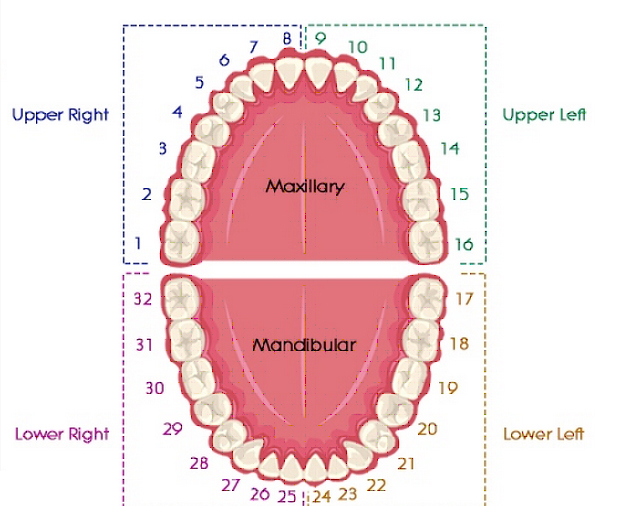
Tooth Numbering System Focus Dentistry
published by the Australian Dental Association (ADA) in 1986. The Fifth Edition was expanded to The Australian Schedule of Dental Services and Glossary. Where separate one-surface restorations in the same material are placed on the same surface of the same tooth at the same appointment, the number of such restorations should be recorded and.
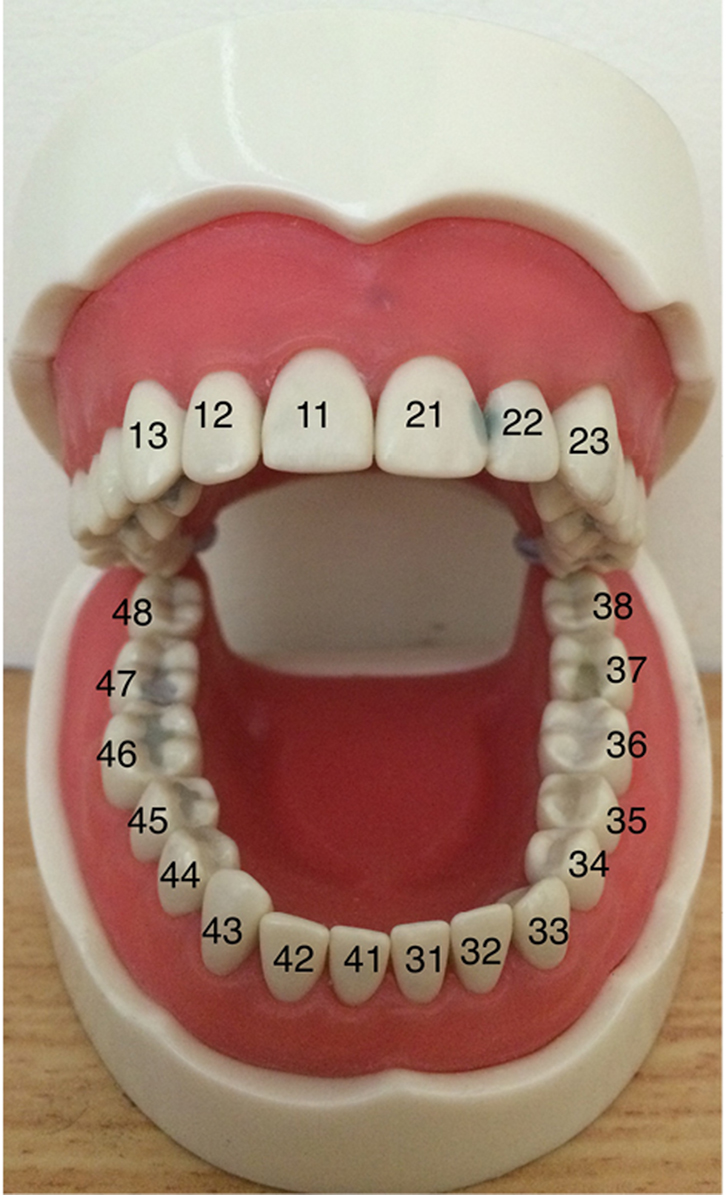
RACGP Management of dental trauma by general practitioners
Checking periodontal health is part of the full dental examinations (Item Numbers 011 and 012) and so Item Number 221 is to be used only in cases where specific periodontal problems have been identified and further diagnosis and management of periodontal disease is appropriate.. The primary objectives of the Australian Dental Association.